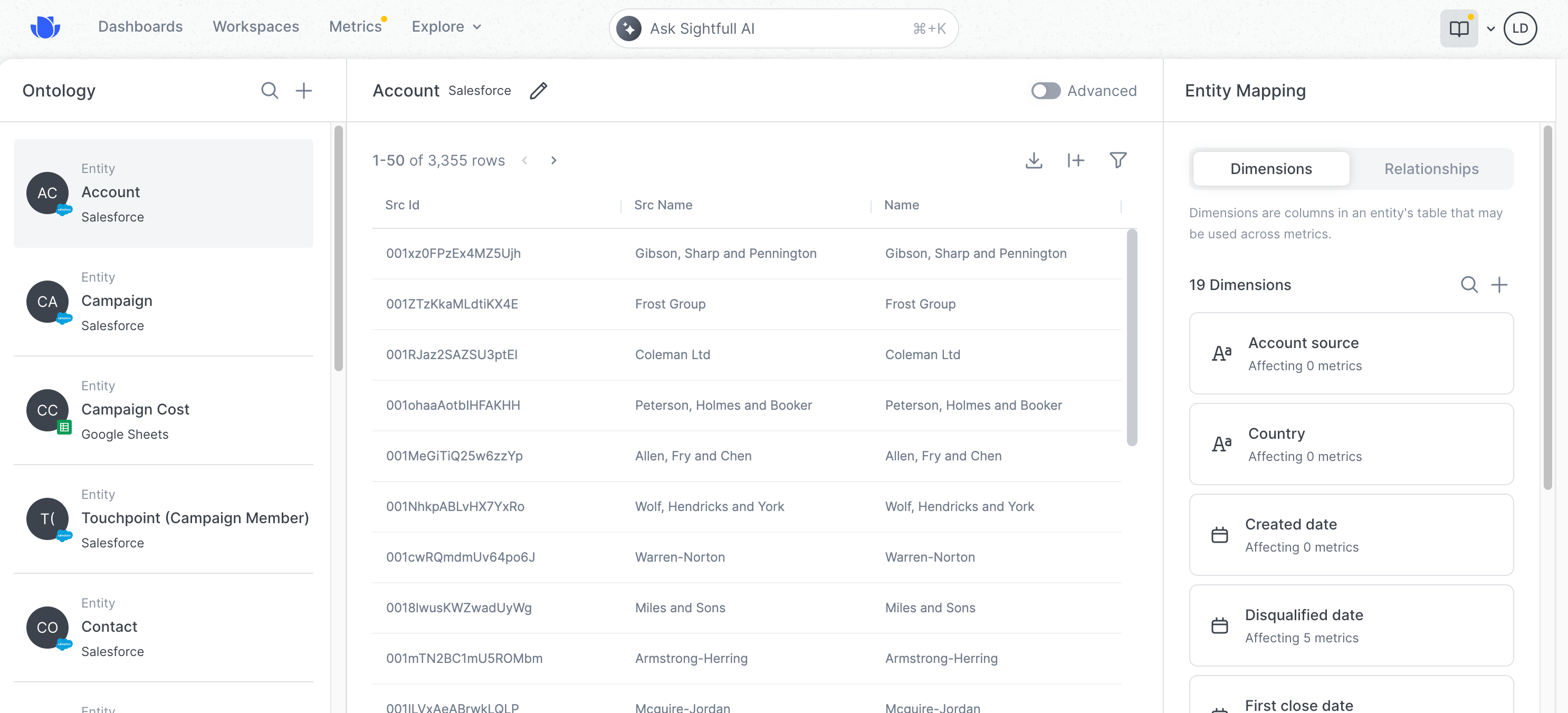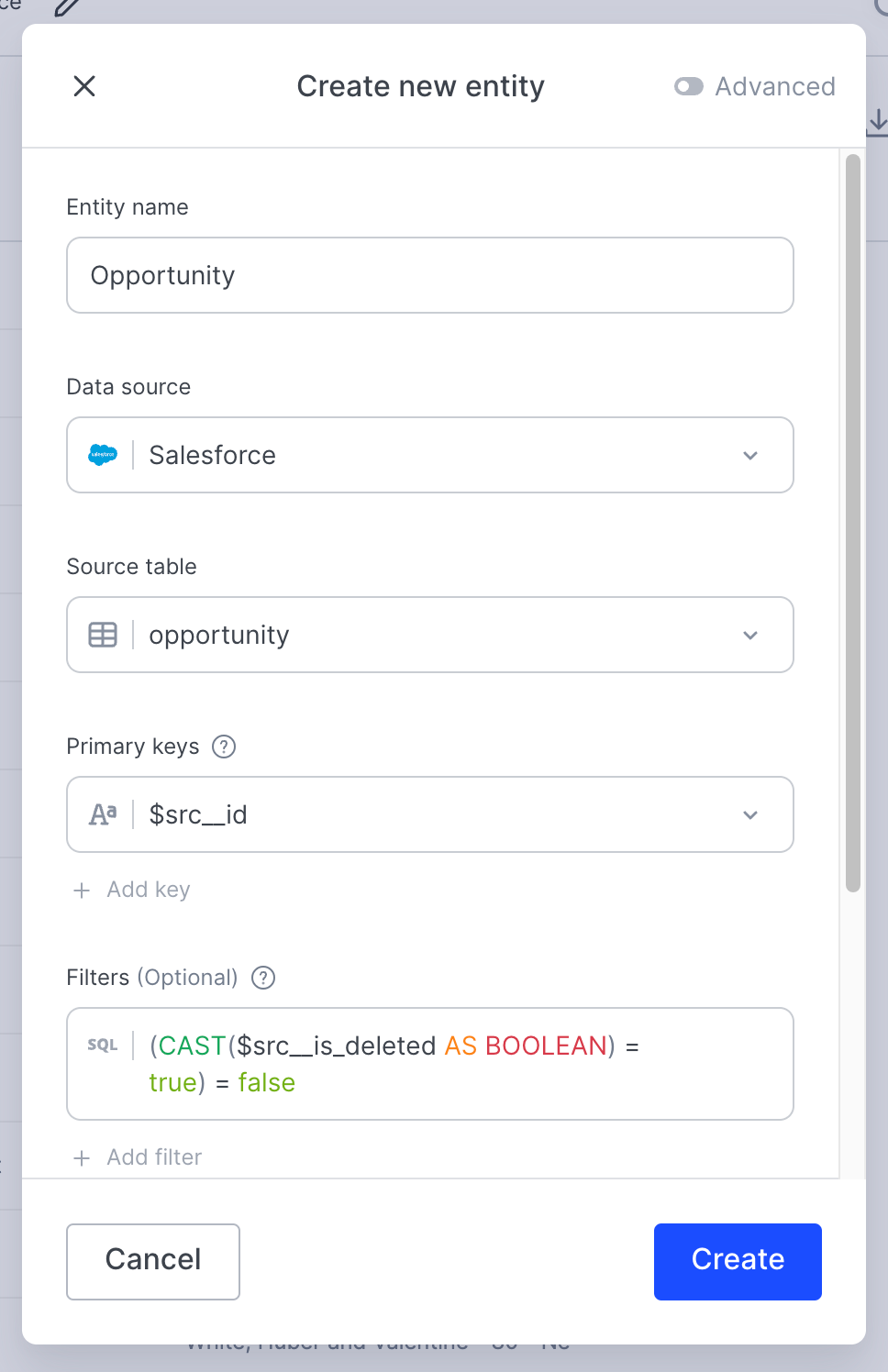Entities
In the context of semantic mapping, an entity represents a key object or interaction within your business domain, such as a customer, product, or touchpoint. In Sightfull, entities play a critical role in the structure and interpretation of data, and serves as a building block for your ontology
Getting started

-
Entities in your data model are displayed on the left side of the ontology page. In this section you can also search and create new entities (using the
+button). -
Selecting a certain entity will display:
-
The entity table, which provides visibility into the actual values of your data, where every column represents a dimension. By default, the primary keys and "name" are displayed, and you can add columns and filters to customize your view.
-
The entity's corresponding dimensions and relationships, displayed on the right side of the page. Click on the cards to edit them or use the
+button to create new ones.
-
-
Switch to Advanced mode (using the toggle above the table) to get a full view of your entity and make edits directly in SQL. This mode is beneficial for those who prefer working in a pure SQL environment and provides additional flexibility.
Creating and editing entities
To create or edit entities, start by navigating to the ontology page. Now, click the + button to create new ones or select the desired entity on the left panel and then click the "pencil" icon to edit it. A modal will be displayed, requiring the following inputs:

-
Entity name - The unique and descriptive name of the entity.
-
Data source - The source of the entity data, based on your connected data sources.
-
Source table - The actual table that represents the entity within your data source.
-
Primary keys - An entity column with unique IDs. This is important for creating accurate relationships. If no single column represents a unique key, you can combine several columns to create a unique key.
-
Filters (optional) - A specific subset of data from the source table for the entity.
-
Description (optional) - A description of the entity.
Next, create new dimensions and relationships to your entity.
Wrapping up
Entities are the lego pieces that build up ontology, transforming messy raw data to a structured, robust and meaningful foundation. Create and manage entities to ensure your semantic and metric layers represent your business logic and support your analytics needs.